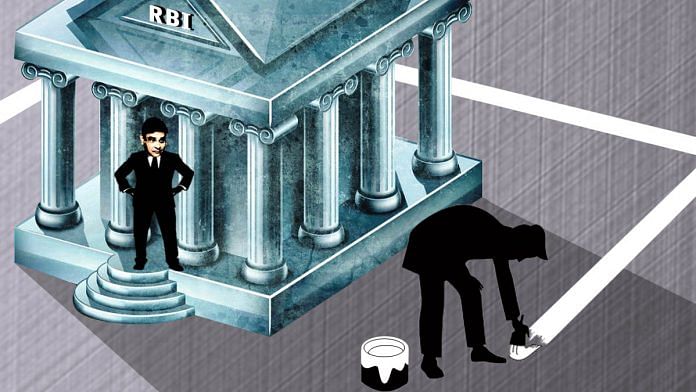The RBI has agreed to look into longstanding demands of the government, including easing of lending norms.
New Delhi: The Reserve Bank of India (RBI) and the government both declared themselves winners after a nine-hour board meeting Monday that was held amid an unprecedented bitter battle between the two.
While government officials said their demands had been met, RBI officials said most issues will be looked into by existing or new committees comprising officials of the central bank and the central government.
The RBI has also agreed to look into several issues pertaining to the relaxation of lending norms and prompt corrective action (PCA), both longstanding demands of the government.
Sources said the meeting was more or less cordial, despite the “severe” disagreements between the government and the RBI. The RBI board will hold its next meeting 14 December.
What the RBI gives
Micro, small and medium enterprises sector
The RBI board decided to allow restructuring of loans of micro, small and medium enterprises (MSME) for up to Rs 25 crore.
The move will come as a huge relief to the cash-strapped sector. The government has been looking at various ways to ease the cash flow into this sector, one of the worst affected by the demonetisation drive. Recently, Prime Minister Narendra Modi also announced loan sanctions for MSMEs in 59 minutes.
Liquidity
The central bank board agreed to inject Rs 8,000 crore into the system through purchase of government securities on 22 November.
Prompt corrective action
As many as 11 banks with high non-performing assets and weak balance sheets have been brought under the prompt corrective action plan.
Under the plan, the banks are barred from carrying out normal banking activities. This, many have said, is doing more damage to already besieged lenders, and has been a sore point between the government and the RBI.
The matter will now be referred to the board of financial supervision.
Recently, S. Gurumurthy, a government-appointed director on the central bank board, underlined the need to relax norms under PCA, pointing out that India was a bank-driven economy.
Also read: RBI signals a compromise with Modi govt after marathon meet
What the government gives
RBI surpluses and dividend
One of the main issues that brought the RBI and the government at loggerheads pertained to the former’s surpluses and dividend.
The government has been urging the RBI to increase the chunk of surpluses that comes to the Centre. However, the board has decided to set up an expert committee to examine the economic capital framework (ECF) of the central bank, which deals with the surpluses of the RBI.
The membership and terms of reference of this committee would be jointly decided by the government and the RBI, a statement issued by the central bank said.
The committee is expected to give its prescription for future reserves and surpluses, and the RBI’s past reserves may not be touched.
The board decided to maintain capital adequacy ratio — the minimum capital required to absorb risks — of banks at 9 per cent.
However, it decided to extend the transition period for implementing the last tranche of the capital conservation buffer (CCB) of 0.625 per cent by a year till March 2020. This extension will allow flexibility to banks, which can have more money to lend.
Also read: Ugly fight to control RBI is hurting India







I think the government has stepped back from the abyss. Shri S Gurumurthy’s masterly exposition of Economics .303 a couple of days earlier showed up the calibre of the forces ranged against the central bank. Good that an expert committee will go into the whole question of Economic Capital Framework. Had such intellectual rigour been the hallmark of policy making, something like demonetisation would never have happened.